Swati Mallik & Sayanti Poddar
Every year in Bengal autumn brings a special message with it – the time for celebration has come once again! In Bengal, especially in Kolkata, there is a certain exuberance in the air… big hoardings obstructing almost every sight, huge pandels blocking roads and lanes, thematic lights along the city streets, long queues of people either to enter the shops for last minute shopping or to enter the puja pandels- the city is simply charged up to celebrate the biggest Bengali festival of the year – Durga Puja.
Along with the thousands of small and big budget community puja pandels in every nook and corner of the city, there are quite a few households who worship Devi Durga in traditional but simple and serene way. In this city of theme dominated puja celebration, these ‘Bonedi’ households (the homes of the aristocrats) have been still celebrating this autumn festival in its true, original form for centuries. These families remember the occasion along with the associated age-old rituals, which have been passed to them over generations like a family heirloom.
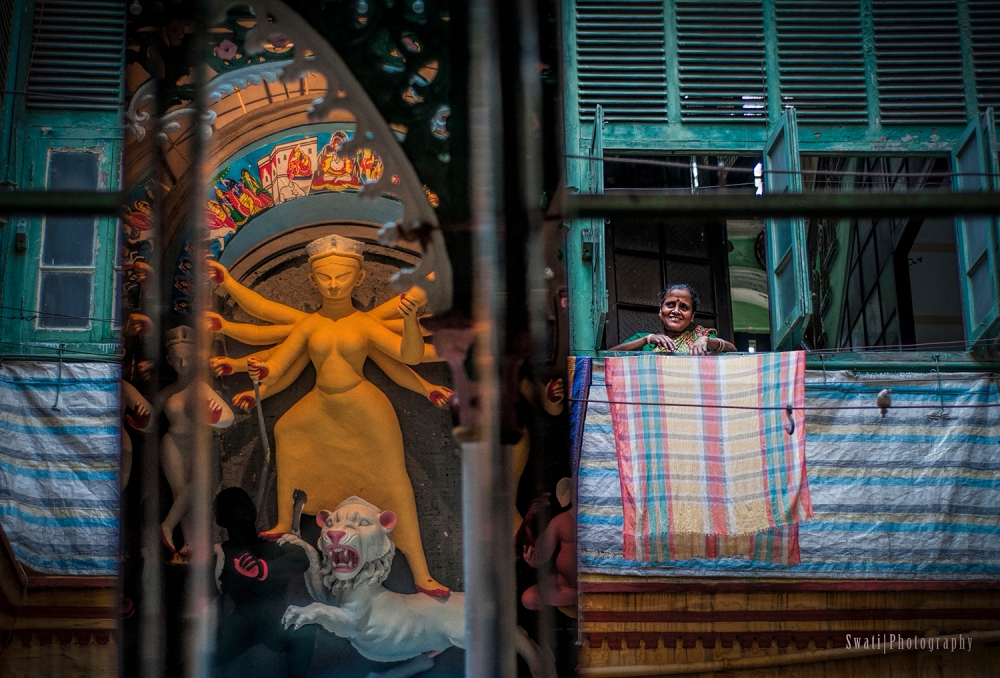
The History
The Behala Sabarna Roy Choudhury’s Durga puja is perhaps the oldest puja organised even before the city Kolkata was officially born. This family was the landlord of 3 villages- Kalikata, Sutanuti and Gobindapur, which they gave to the East India Company and thus the city Kolkata eventually emerged. They started the puja long back in the year 1610 and till now the family celebrates the puja in the same location.
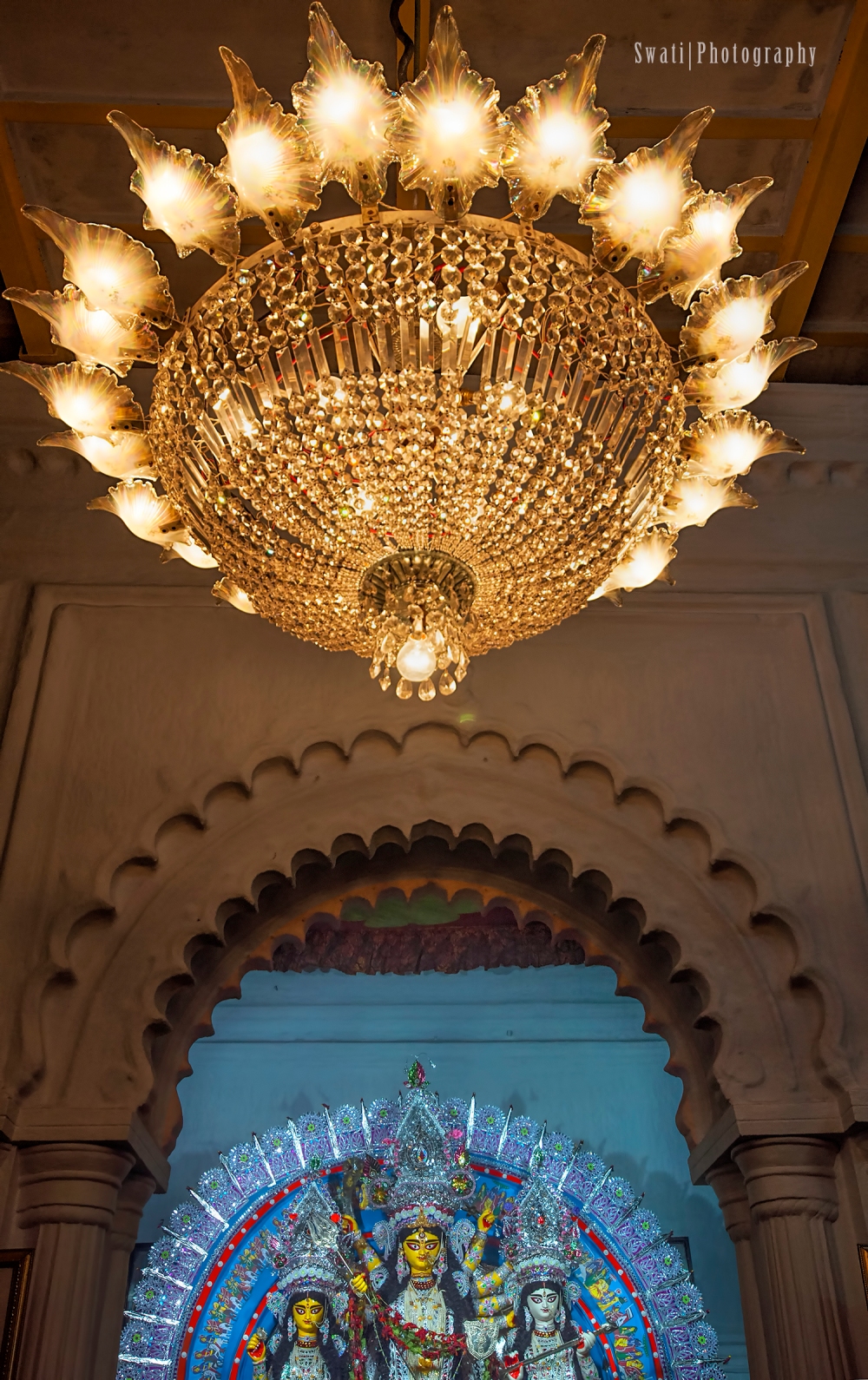
Another century old puja that still tries to maintain the same rituals and grandeur as much as possible is Shovabajar Rajbari. To celebrate the win of East India Company in Battle of Plassey (1757), Raja Nabakrishna Deb (who was the teacher and translator of Lord Clive) started the puja in his palatial residence. This was the first puja in a household where British officers, along with Lord Clive and Warren Hastings, were invited to participate in the religious festival. Apart from these households, there were many aristocrats in the city who started hosting Goddess Durga in their family and they still continue to carry forward their tradition with or without much difficulty.
The Past Glory
These Bonedi families try to maintain and follow the century old customs and traditions, though sometimes there have been few changes over time. In Sabarna Roy Chowdhury’s, the scale and grandeur was much greater before. Nearly 5000 people were fed during puja in the past, which is reduced to 300 now-a-days. It is mentioned by the old timers that Durga adored herself with jewelleries from Jorashanko’s Shiv Krishna Dawn’s residence, had lunch at Kumortuli’s Abhay Charan Mitra house and entertained herself at Shovabajar Rajbari. This entertainment part of Rajbari consisted of Baiji dance, Kobigaan, theatre, fireworks and what not! Dawn family of Jorashanko (puja started in 1840) bought large quantities of jewelleries, diamonds and expensive golden colored metals from Europe to decorate Chalchitra as well as the Goddess. It is said that to compete with Dawn family’s puja extravaganza, Jorashanko’s Prince Dwarkanath Thakur submerged his family’s Durga idol alongwith her expensive gold ornaments in the Ganges!
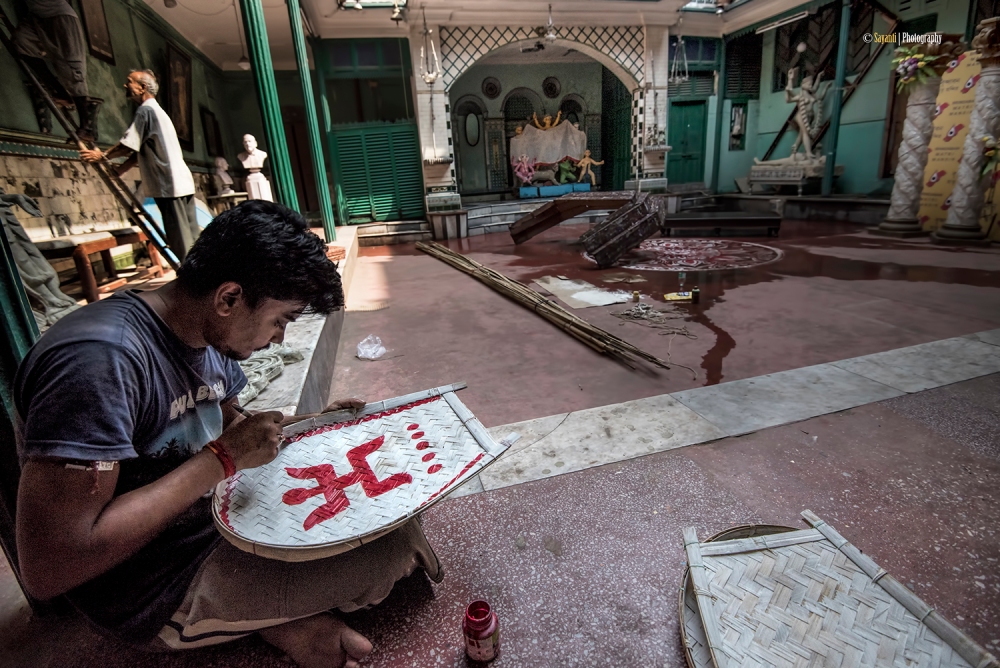

The Past and the Present
Interestingly, most of these houses toned down the grandeur of the puja celebration with time. For instance, the Basu Mallick house of Potoldanga Street started puja in 1831 on a grand scale but they presently continue the festival on a subdued note. Earlier, the ritual of feeding 2000 people with ‘Bhog’, (food first offered to the goddess on silver or brass utensil and then distributed to others) does not seem practical in present day situation. Hutkhola Dutta Bari, who started the puja more than 200 years ago, is now celebrating the festival in their century-old ‘thakurdalan’ without any kind of exuberant show-off.
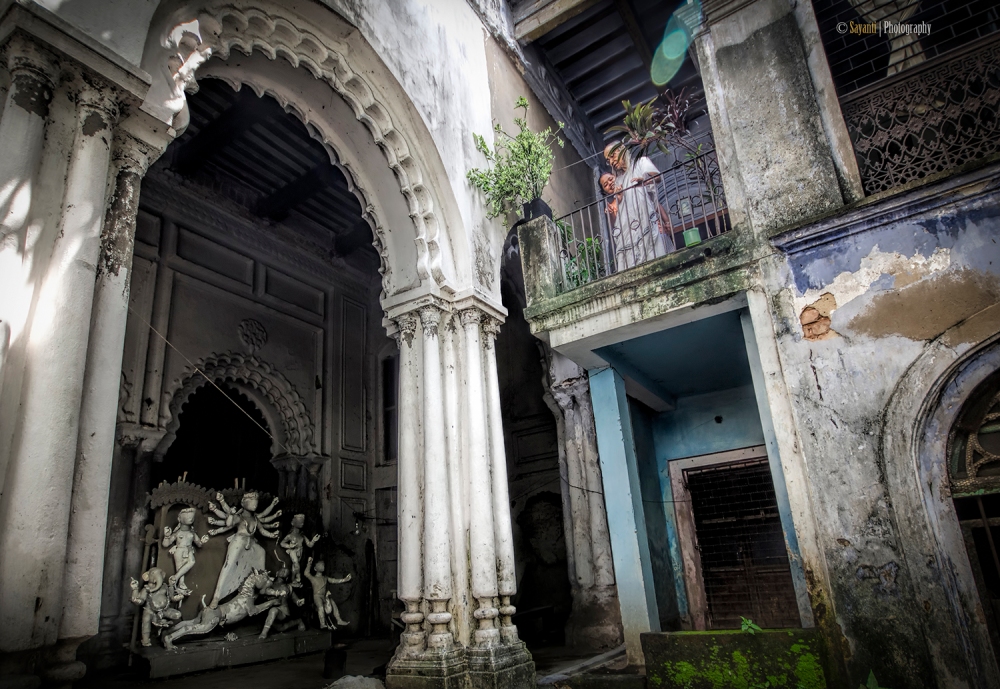
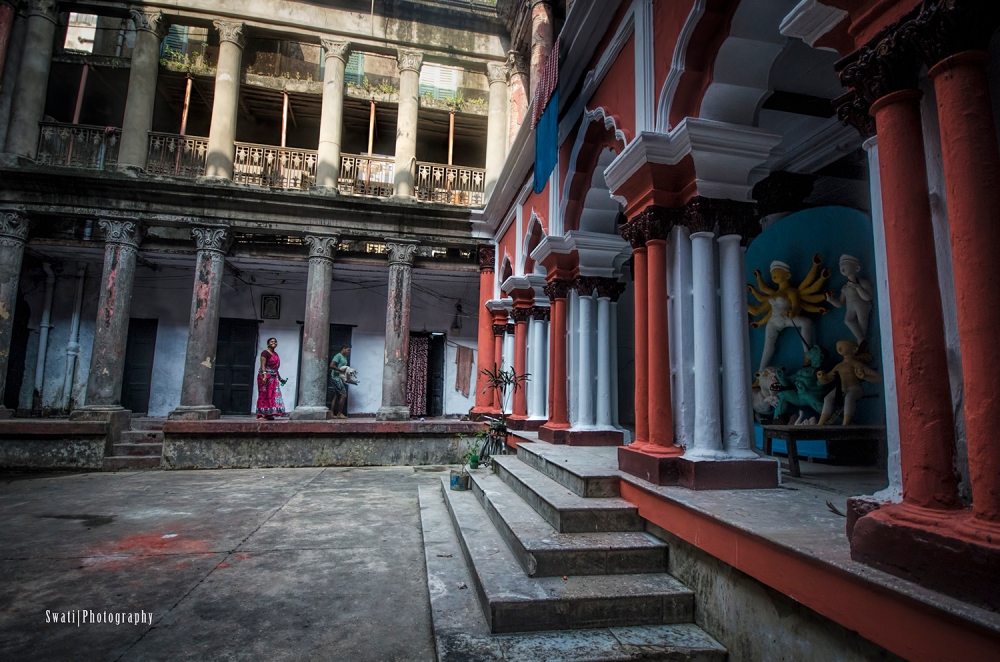
Limited resources and fall in income standard (mainly after the loss of land-ownership and abolition of ‘zamindari’ system) are the main causes for some of them. while for others, it is the lack of time and helping hands that are required to make the event as grand as before.

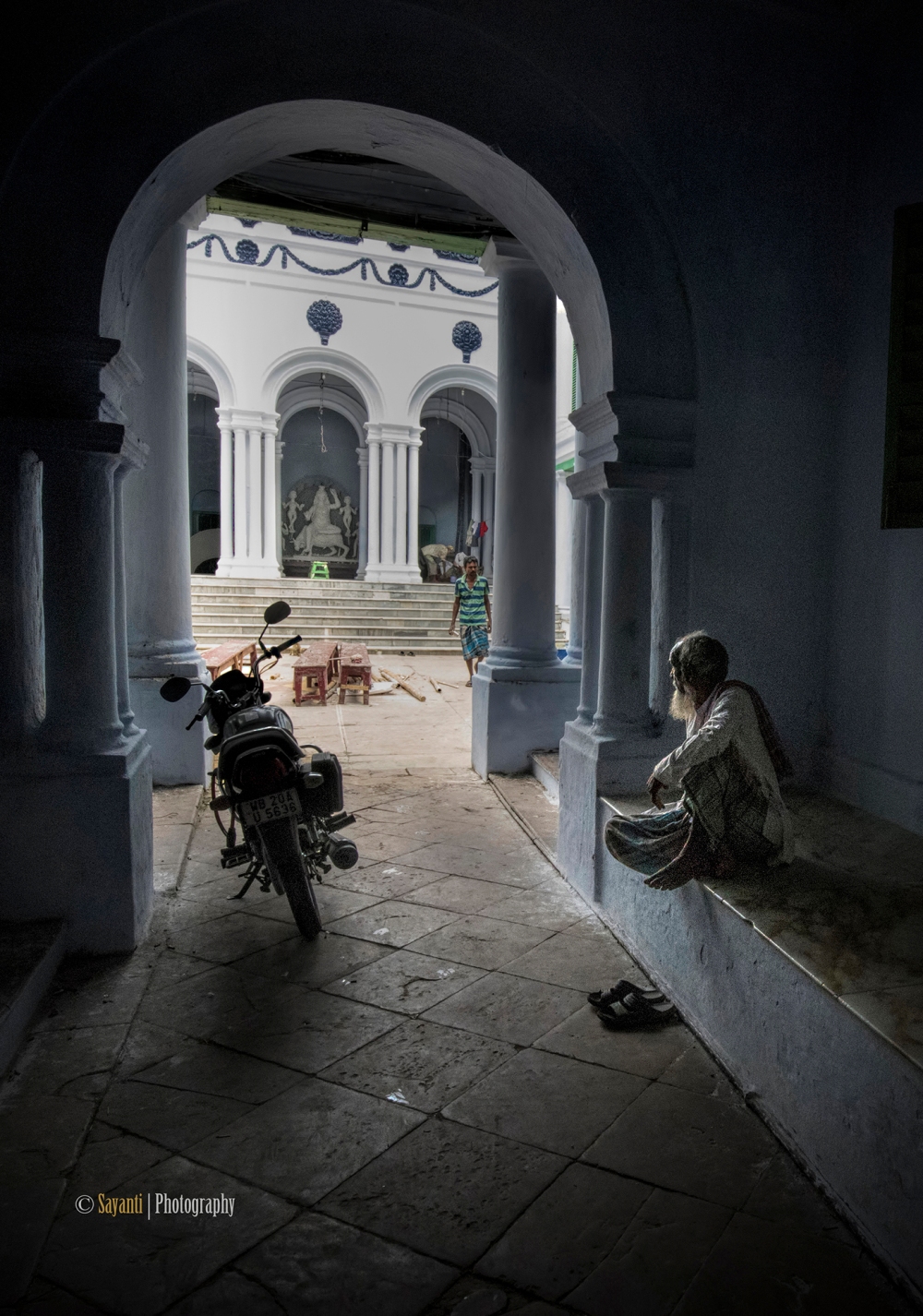
The Thakurdalan
The most elegant thakurdalan (courtyard of the goddess) the bonedi houses in Kolkata is perhaps that of the Pathuriaghata Ghosh Rajbari. Build by Khelat Chandra Ghosh, this mansion’s pillared and arched inner courtyard is the most elegant one. Planned and designed by German architecture company Martin & Burn, the premises comprises of marble staircase with wood panelling on either side in a 85 feet long corridor lined with blue and white elephants, originally used as flowerpot stands. A Belgian cut-glass chandelier at the dining hall and a Thomasson Chronometre grandfather clock, brought from London to Kolkata in 1819, in the study holds pride of the place.
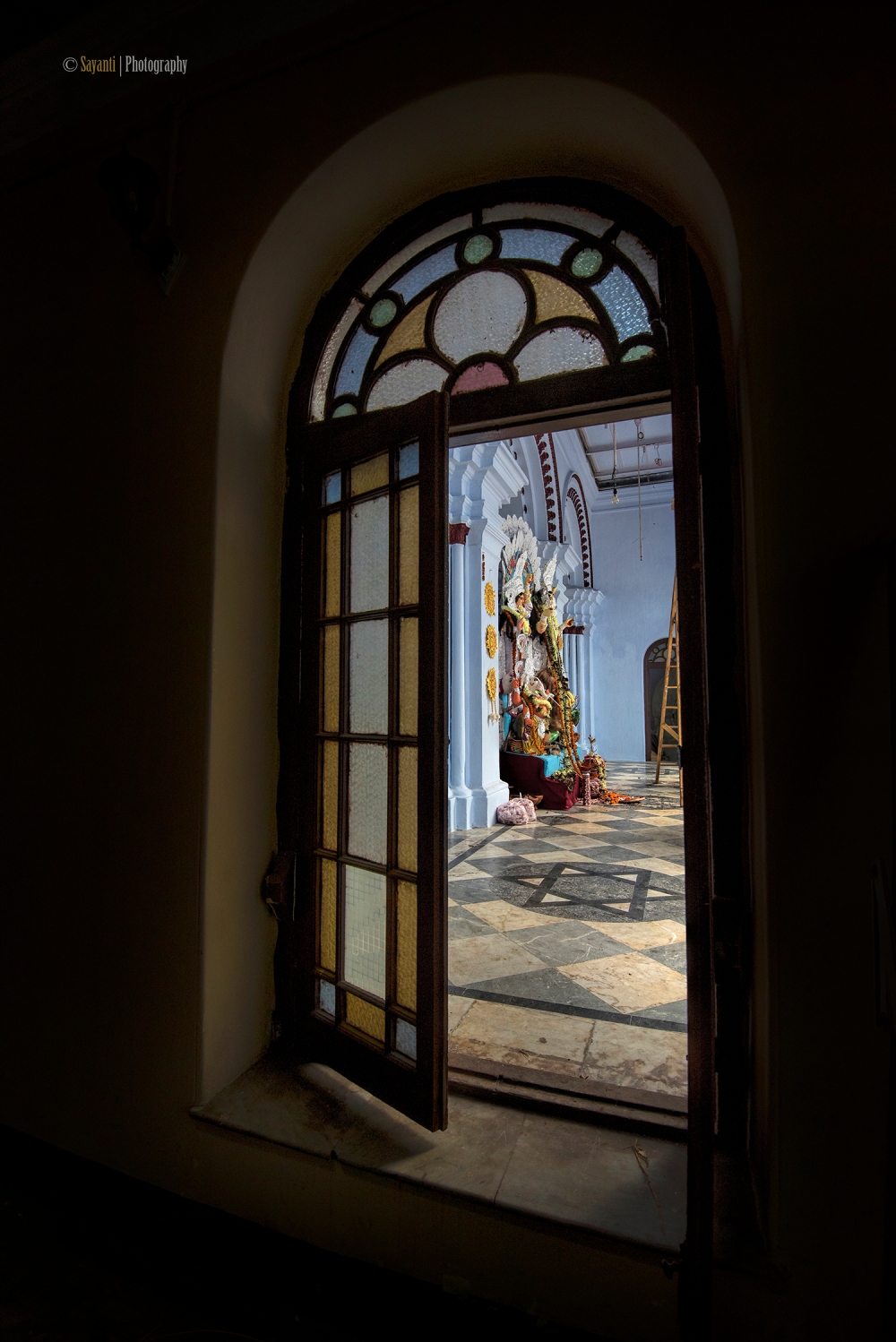

The Laha Bari, near College Street, has porticos and colonnaded verandas that are a perfect foil to the exquisite chandeliers and stained glass windows inside. The thakurdalans of Shiv Krishna Dawn and Narasimha Dawn’s house (puja started in 1859) are places of photographers delight. The thakurdalan of Shiv Krishna Dawn’s residence, that looks like gallery of opera’s in old European countries, often used for shooting purposes.

A small but very interesting thakurdalan of Harinath Mookherjee’s house at Rajabajar shows statues of Habsi (slaves in pre-British India). On either side of the thakurdalan, statues of one man and woman chained at their legs can be seen. At the main entrance, there is unique design of stucco painted with multicolored figures and floral motifs. The thakurdalan of Potoldanga Basu Mallick house also has stucco floral decoration on its arches and above it a row of stucco figures depicting Dashavatar of Vishnu. Several statues of mercury can be seen in the courtyard which were used to hold gas lamps. The large thakurdalan and the lights on the courtyard of Colootola Badan Chandra Roy’s mansion look very beautiful specially at nights.
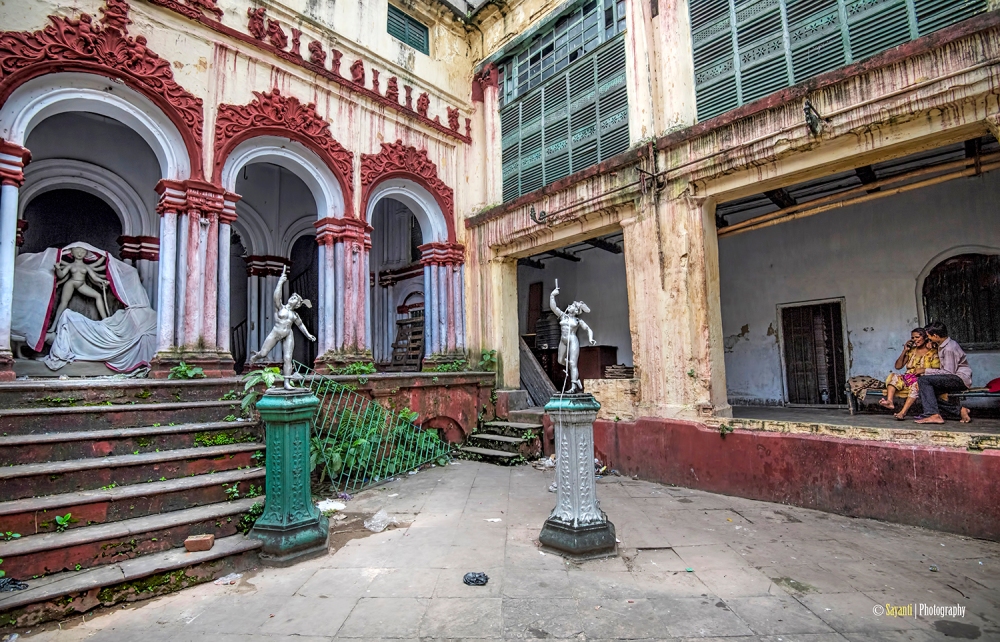
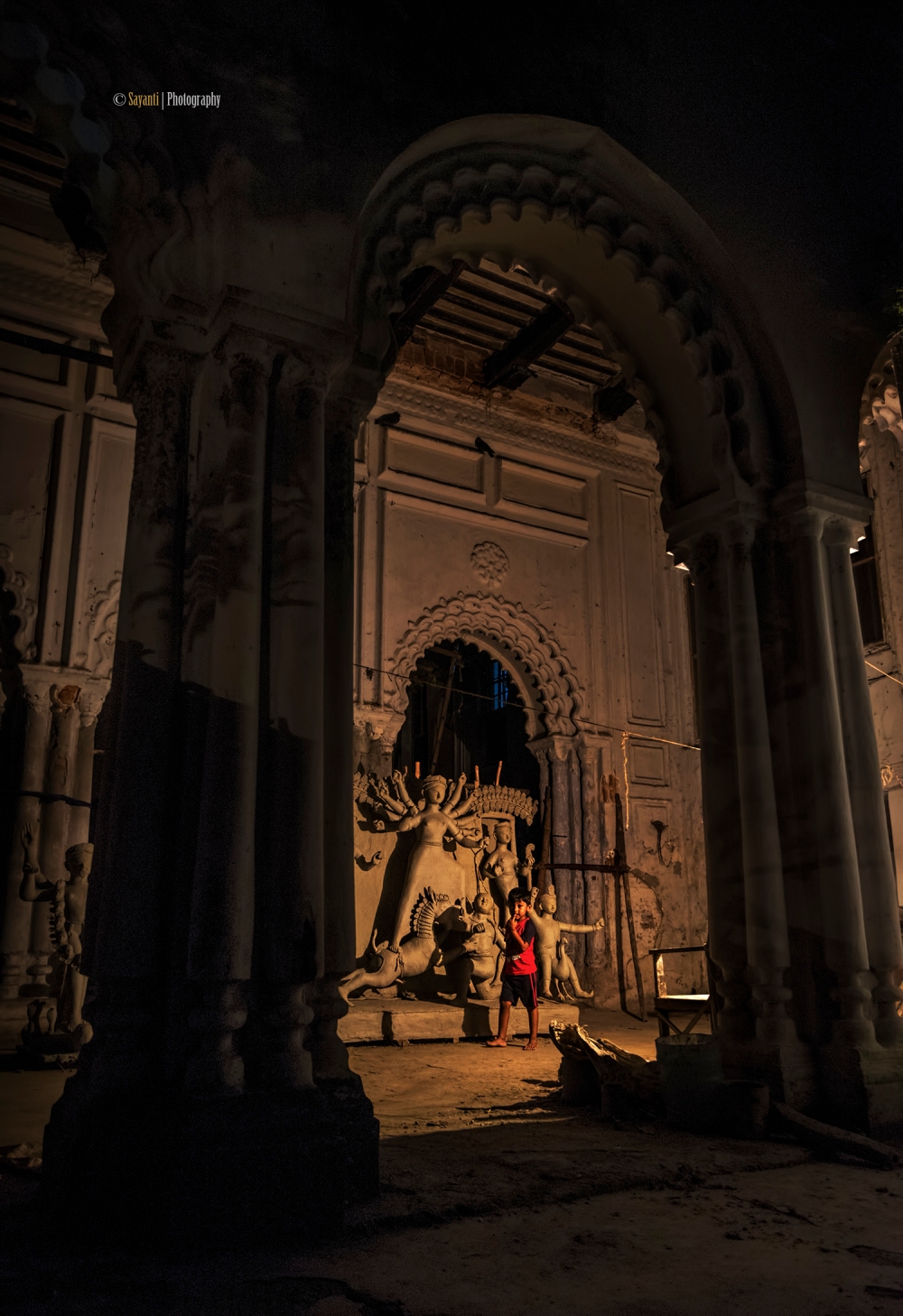
The Idol: Jaago Durga
The idols of most of these household pujas is ‘ek-chala’, simple and relatively smaller to make the immersion little easy for the labourers. These families still use manual labours to immerse the goddess by lifting the idol on the shoulder (as per custom) and thus it is very important to maintain the right height and weight. From Sabarna Roy Choudhury’s to Dawn’s to Laha Bari, the idols are sculptured from scratch in the household by the idolmakers. In some houses, the idols come straight from Kumortuli few days before the puja begins.
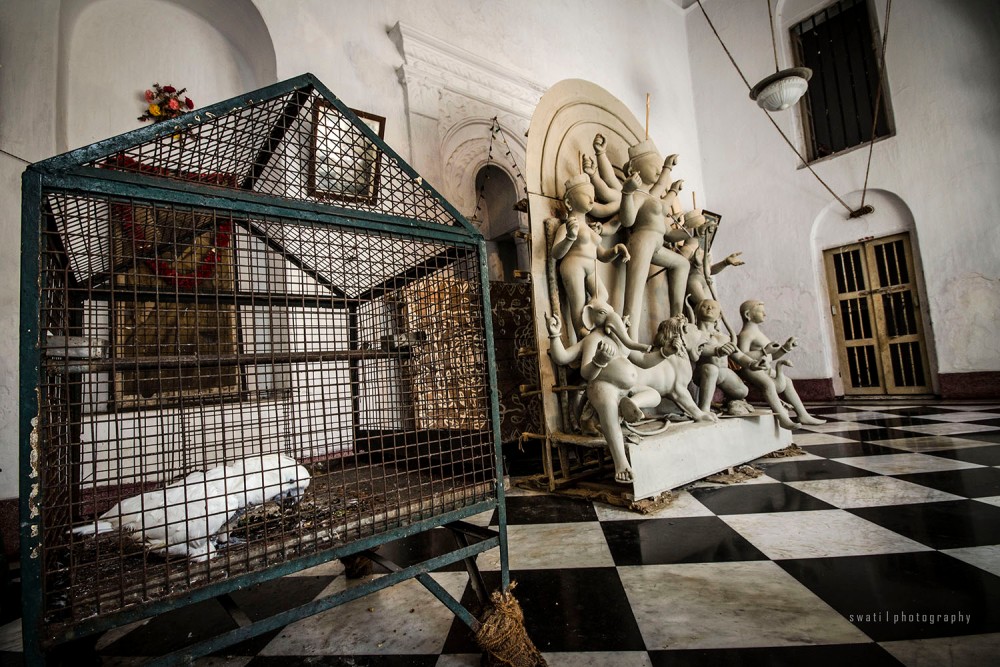
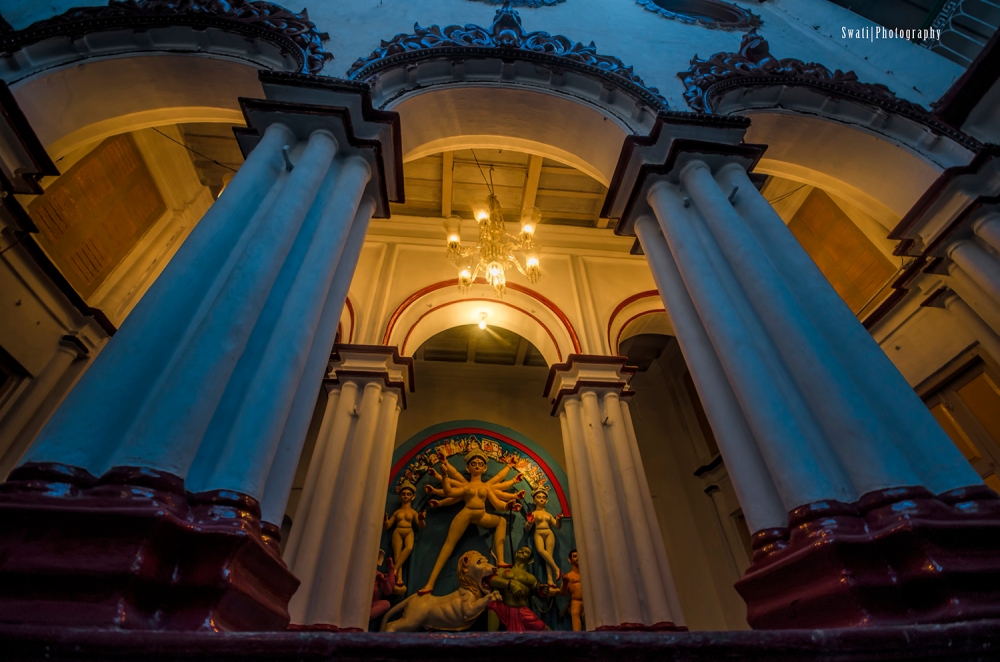
In some houses, the idols have some specific pattern, like, in Shovabajar Rajbari, the face of the lion looks like a horse. In Thanthania Dutta Bari (started in 1855) or in Darjipara Mitra Bari, Devi Durga comes with her husband Shiva and does not display a war mood. Here, the idols are not ‘Mahishasuramordini‘ (the warrior goddess posed to kill demon Mahishasura) but ‘Hara Gouri’. In Chhatubabu Latubabu’s house, Durga is flanked with her sakhis (companion) Jaya and Vijaya (posed on lotuses) instead of Laxmi and Saraswati (daughters of Durga). Even the color of the idol can be different. Blue Durga (in the form of Goddess Kali) and red and maroon skinned Durga (described as tapta Kanchan color) are also worshipped in some of the families. At Bhowanipur De family’s puja, the most interesting part of the idol is demon Mahishasura who symbolises the British Empire. Here, the demon wears long coats and boots, golden hair and moustache like Englishman and thus Goddess Durga becomes the slayer of British Empire.
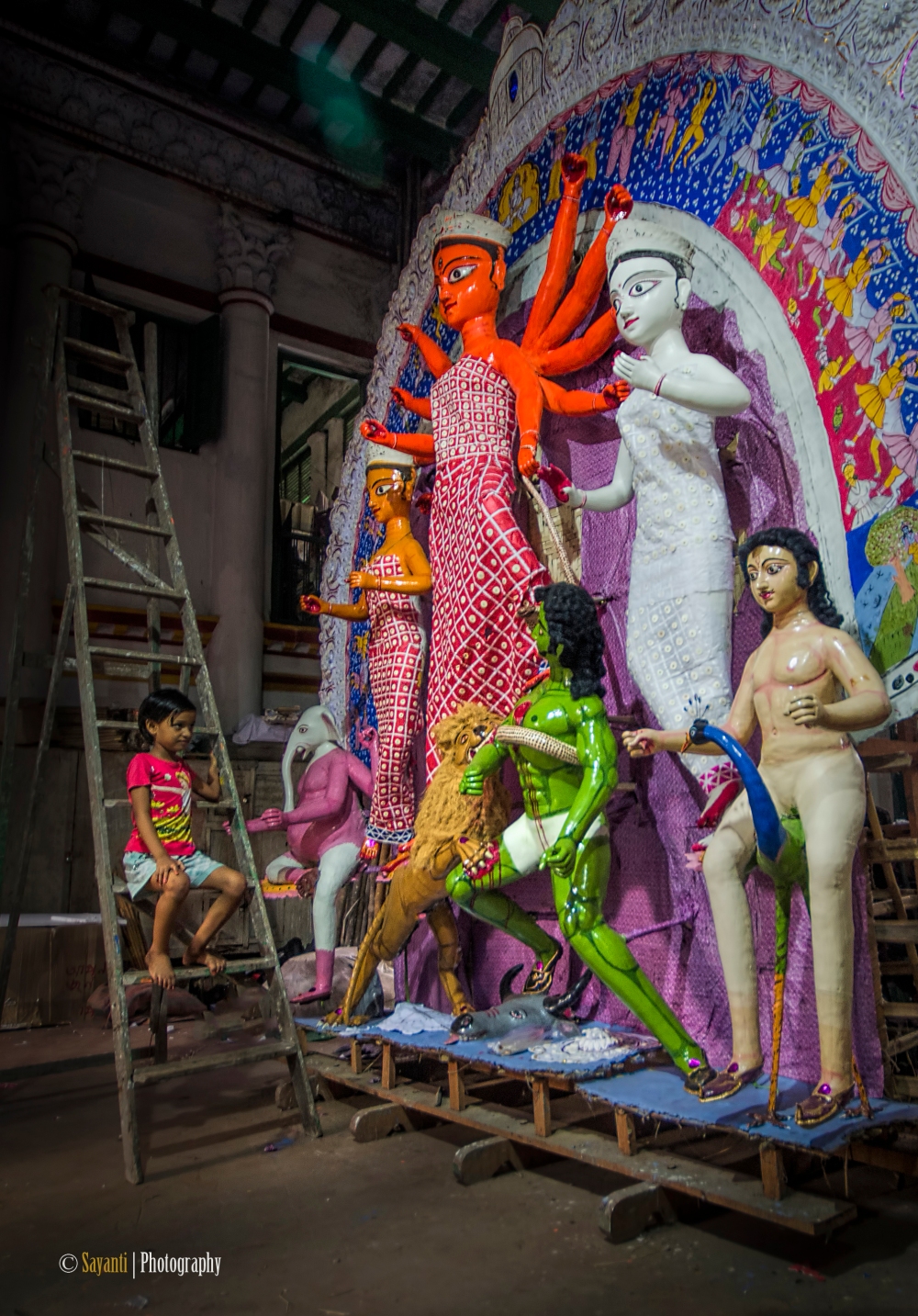
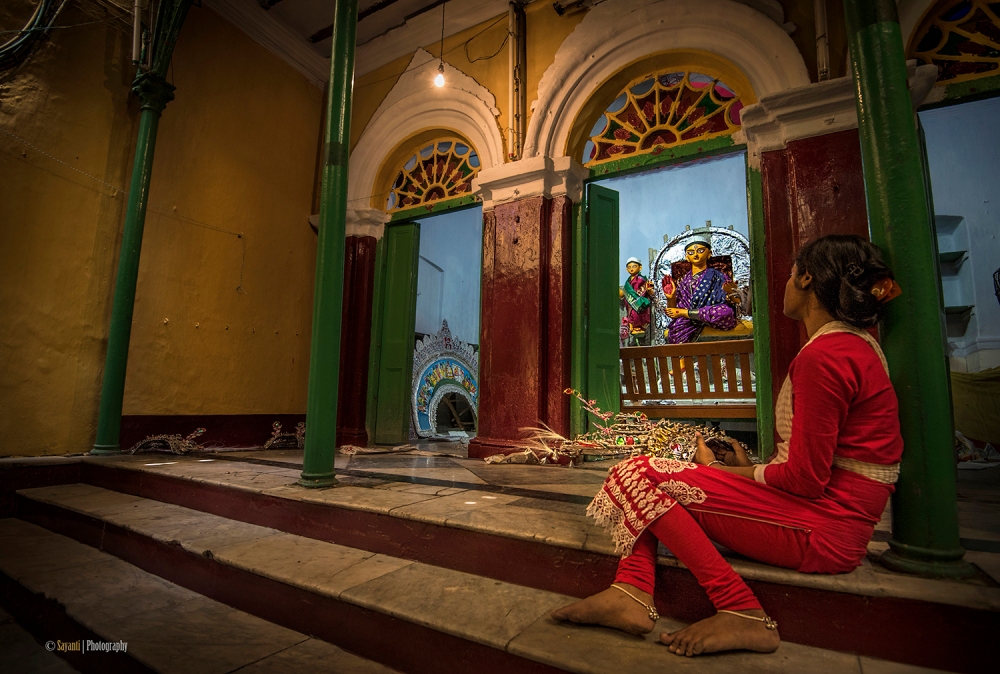
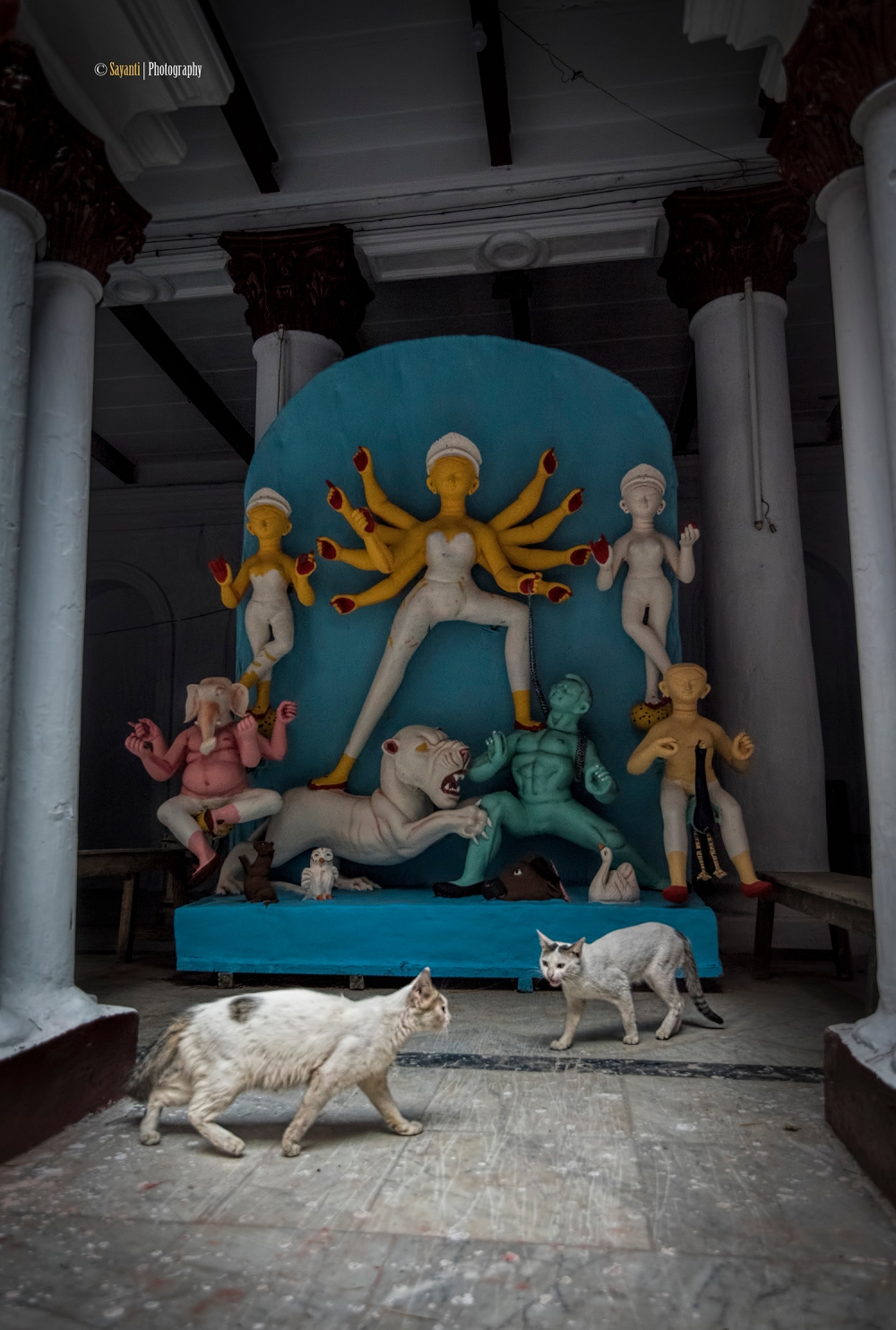
The Bhog: Maach, Mishti & more
The Maha Bhog (food offered to the goddess) of the Sabarna Roy Choudhury’s puja comprises of ghee bhat, Basanti polao with dried fruits, khichuri, curry of vegetables, traditional fish preparations, payesh and sweets. On dashami, Durga is treated with panta bhaat (rice soaked in water) and kochu shaag. Fishes are also being offered to Durga in Chorbagan Chatterjee and Thanthania Dutta house. In Shovabajar Rajbari, instead of Anna bhog (rice offering), huge amounts of monda mithai (sweets and snacks) are offered which are painstakingly cooked in Rajbari premises. The bhog of Narasimha Dawn house consists of home-made sweets and luchi bhog. Naividya of 37 kg rice is offered every day.
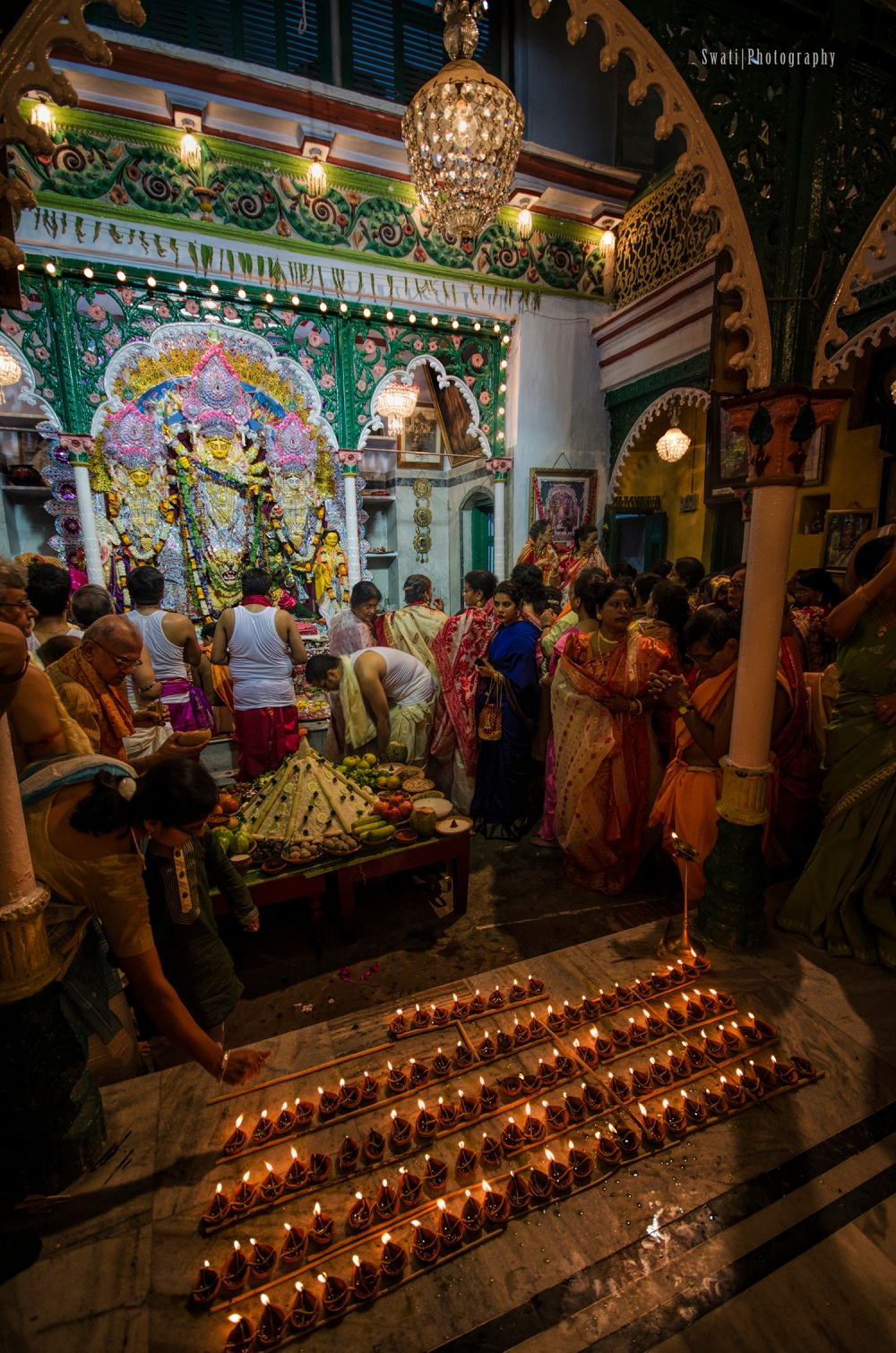
Special Rituals
Each of these families has some distinct special rituals that they continue to perform over the generations. In Shovabajar Rajbari, as well as Jorashanko Dawn’s family, Sondhipuja (a special moment during the puja) is performed with the sound of cannon fire. In Darjipara Mitra family (where puja started in 1807), mandatory 108 lotus flowers are replaced by 108 aparajita flowers, which are offered during sondhipuja. After the immersion of the idol, the women of this family sit on the throne of the Goddess in the expectation that the power of Durga will be transferred into them!

A special rituals called ‘Kalyani’ puja is performed in Girish Ghosh family’s puja (started in 1856) instead of sondhi puja. This unique ritual was initiated by Girish Ghosh himself when his guru died during the time of sondhi puja. Kumari puja (worshipping the virgin in the form of goddess) and dhunoporano (burning of earthen lamps on heads by women) are among the star rituals that are performed in many worshipping households.

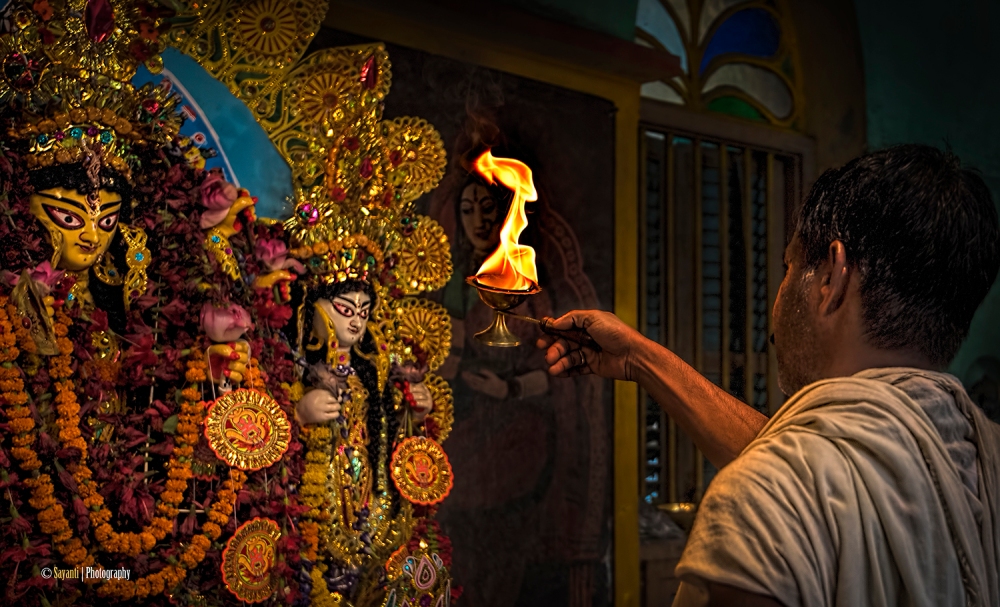

Some rituals had to change with time to cope up with the current situation. Like, letting the Neelkatha bird fly off on Vijaya dashami (so that they could carry the news of Durga’s departure to Shiva) was forbidden by Wildlife Preservation Act. Shovabajar Rajbari now-a-days immerge neelkantha made of clay with the goddess.

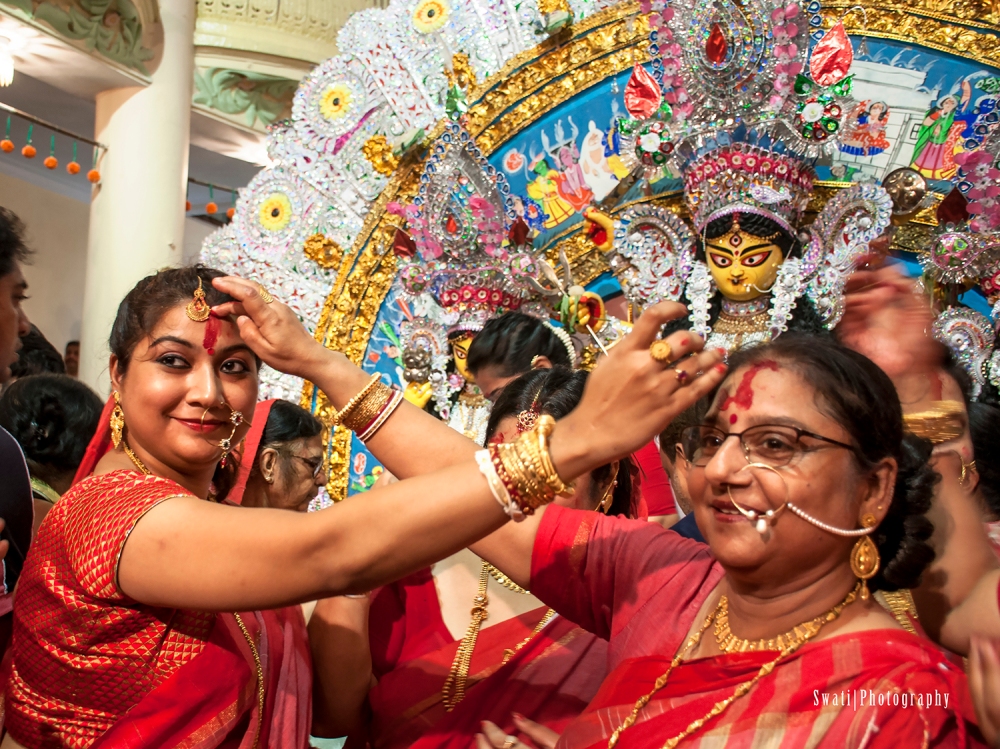
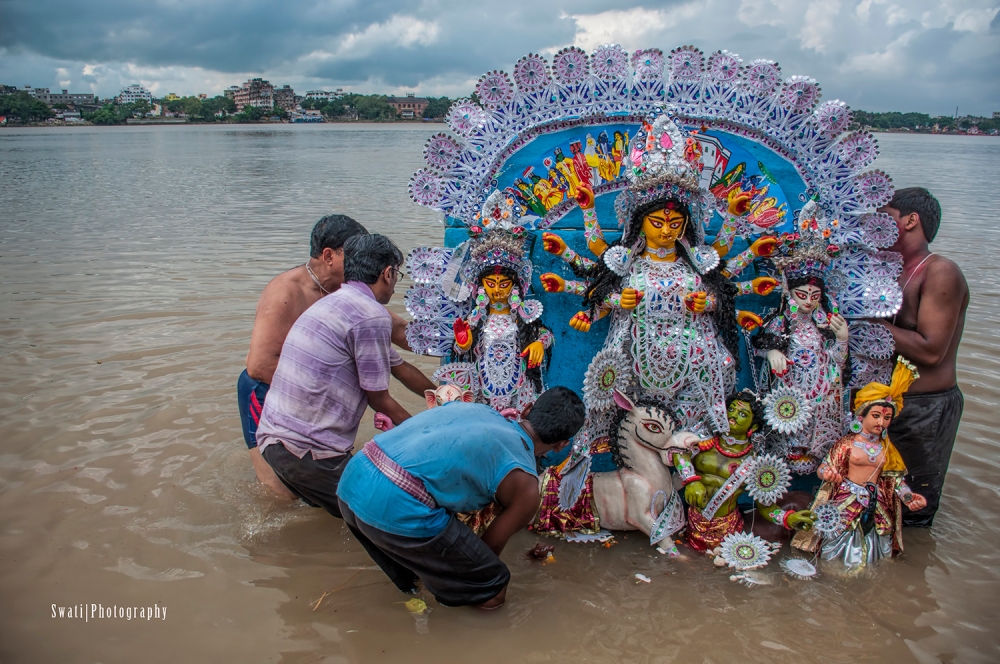
It needs mention that the images were clicked over few years including the current year, and due to our busy job schedule, we could barely accommodate sufficient time that is required for a more detailed coverage. Added to this, the difficulty to reach different ends of the city, posed added problems for more detailed account of these rituals. We hope to update this presentation in future and make it more complete.
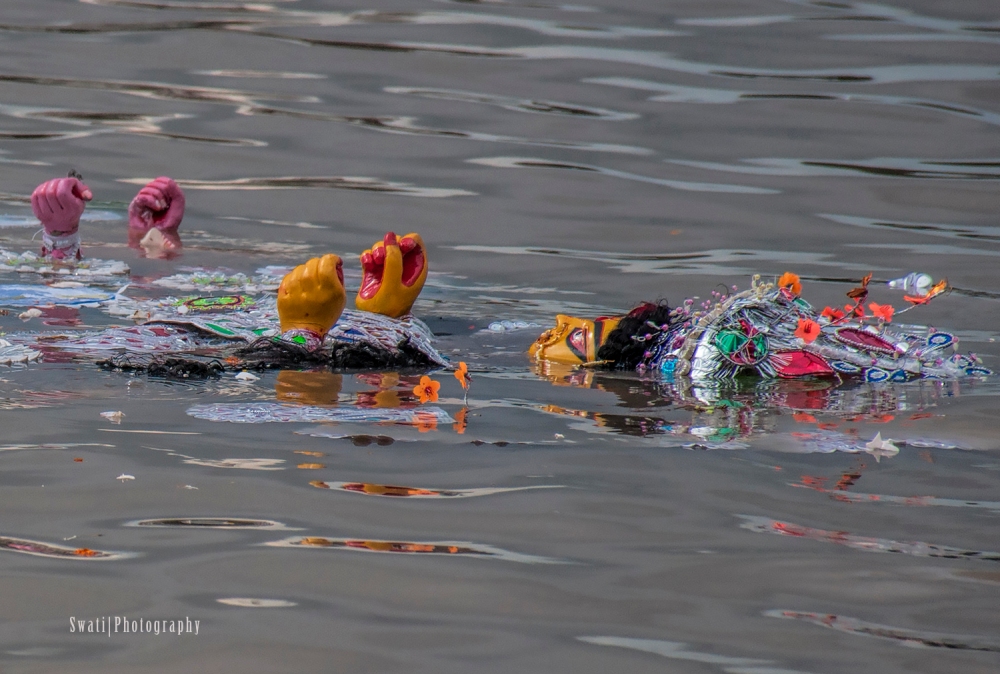
We sincerely thank all the members of the Bonedi families (especially Jorasanko Dawn families, Thanthania Dutta house, Potoldanga Basu Mallick house, Shovabajar Rajbari and others) who not only accomodated us during puja time but also warmly welcomed us and answered patiently to our never-ending questions to satisfy our curiosity whenever we visited their places. This photostory would not have been possible without their help.
All text, images, graphics, and other materials on this article are subject to the copyright and other intellectual property rights of Frames Per Journey, unless otherwise stated. These materials may not be reproduced, distributed, modified or reposted without the express written permission of Sayanti Poddar and Swati Mallik.
Excellent… ❤️❤️💐💐
LikeLiked by 1 person
Thank u @Joy Dasgupta
LikeLike
Excellent, both in terms of pictures & writings…
LikeLiked by 1 person
Thanks a ton @Manojit Roy.
LikeLike
Excellent find and information.
Well captured, Good write up.
Keep it up.
LikeLiked by 1 person
Thanks for Ur feedback @Falguni De. Shuvo sharodiya to u 🙂
LikeLike
this is beautiful
LikeLike
Thank you Rukmini Sen 🙂
LikeLike
Asadharan Chobi …..
LikeLike
Thank uuu 🙂
LikeLike